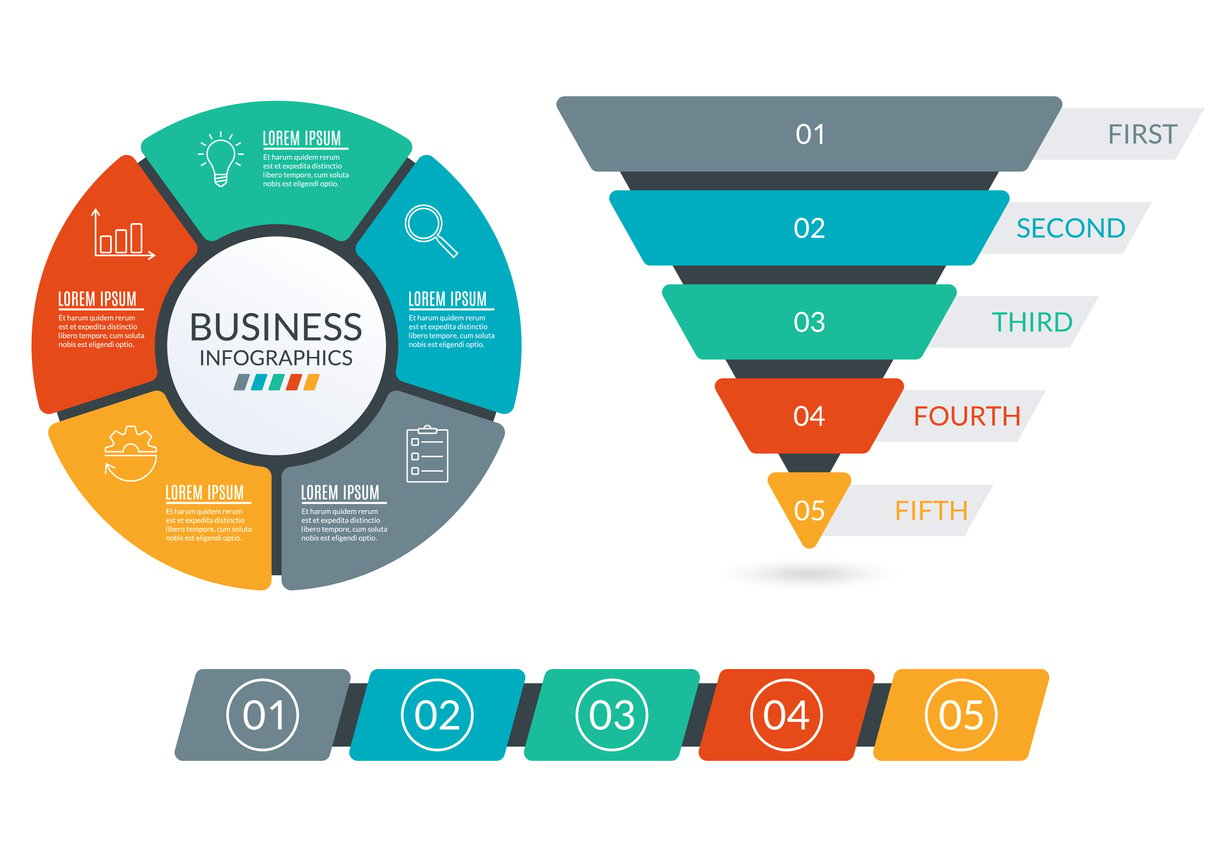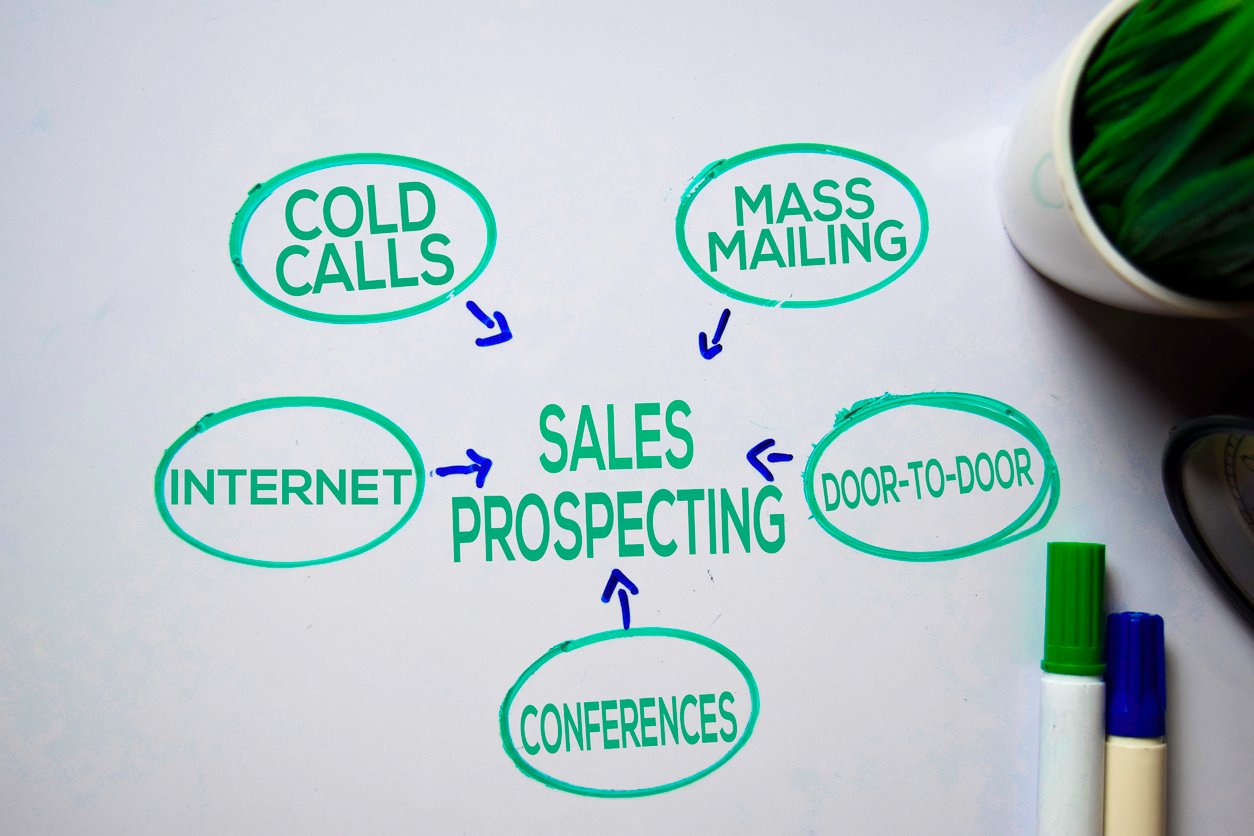
4 Ways the Challenger Sales Model Can Help You Close More Sales
 Updated on
Updated on
 By Carlos Correa
By Carlos Correa
Carlos Correa
Carlos has been involved in the sales space for well over ten years. He began in the insurance space as an individual sales agent, managing teams as s...
learn more
Carlos Correa
Carlos has been involved in the sales space for well over ten years. He began in the insurance space as an individual sales agent, managing teams as s...
Table of Contents
Table of Contents
Prospects don't need to be educated about a product or service anymore.
When they get on a call with a sales rep, they won't need to be told about the product's features or your competitor's pricing.
They know what they want, and they know how much they're willing to pay for it.
As a result, sales reps have to be able to engage in far more complex discussions with the prospect. Sales teams need to develop a better understanding of the prospect's business so they can showcase their authority and test the prospect's opinions.
Or, in other words, sales reps should adopt the Challenger sales model because it has the power to place salespeople firmly in control of the sales process and give them the tools they need to close deals in today's competitive environment.
Want to learn more?
Then let's start with:
What Is the Challenger Sales Model?

The Challenger sales model encourages salespeople to adopt a more authoritative, educational, and combative approach to the sales process.
Sales reps take a direct and educational approach, challenging the prospect's preconceived notions to build trust, improve the prospect's buying experience, and close more deals. The concept comes from Brent Adamson's and Matthew Dixon's book The Challenger Sales.
The two authors of this book researched countless sales reps and divided them into five broad categories:
|
Type |
Features |
|
The Hard Worker |
|
|
The Relationship Builder |
|
|
The Lone Wolf |
|
|
The Problem Solver |
|
|
The Challenger |
|
Out of the five types, the Challenger sales reps are by far the most effective, especially in complex sales situations.
That's because Challenger sales reps are essentially teachers. They identify the prospect's various misconceptions – whether about the product or about the pain point – and tackle them by educating the prospect and changing their opinion, which helps establish their authority in the process.
But the Challenger sales model requires a light touch. Sales reps who go into the sales pitch with guns blazing and arrogantly lecture their prospects won't go so well.
Challenger sales reps have to be cautious and discreet in how they approach the prospect. They can't start lecturing the prospect about their business process, claiming to understand it better than the prospect.
What they can do, however, is offer useful information that slowly brings the prospect around to their way of thinking.
That's why the Challengers sales model works on the three Ts principle:
|
Principle |
Features |
|
Teach |
|
|
Tailor |
|
|
Take control |
|
The 4 Benefits of the Challenger Sales Methodology

The challenger sales model stands out because it equips reps to challenge customer thinking and guide deals more effectively.
Below are four key benefits of adopting the Challenger sales approach.
1. Improves Win Rates in Complex Sales
The challenger sales process is particularly effective in industries with long buying cycles, multiple stakeholders, and high-value deals. Instead of reacting to buyer demands, reps proactively challenge customer assumptions with unique insights.
- This creates differentiation in competitive markets where product features alone are not enough.
- By reframing buyer thinking, reps reduce the risk of stalled deals and gain consensus among decision-makers.
2. Helps Sales Teams Control the Buying Process
Modern buyers are often 57–70% through their research before engaging a rep. Without guidance, sales cycles become unpredictable. The challenger sales approach changes that dynamic by putting the rep back in control.
- Salespeople use commercial insights to guide conversations instead of reacting passively.
- The methodology helps set the agenda, ensuring prospects focus on the business outcomes that align with the solution.
- This control translates into shorter sales cycles and more predictable revenue forecasting.
3. Builds Stronger Customer Trust Through Insights
Trust in the challenger sales methodology is not earned by friendliness alone—it's built by delivering insights that teach buyers something valuable about their business. Reps position themselves as advisors who understand industry shifts, competitive threats, and overlooked opportunities.
This means buyers:
- Gain confidence in the rep's expertise.
- See the rep as a partner rather than just a vendor.
- Are more willing to share internal challenges, enabling tailored solutions.
4. Drives Long-term Customer Loyalty
Unlike transactional sales methods, the challenger sales training approach focuses on long-term value creation. Customers who are challenged with new perspectives feel that their rep is invested in their success beyond the immediate deal.
- Loyalty grows when buyers consistently learn from their interactions.
- Existing accounts are more likely to expand, reducing churn.
- This makes the challenger sale methodology a growth driver, not just a short-term closing tactic.
The 5-step Challenger Sales Process

Here's a quick overview of the five steps in the Challenger sales process:
- Research the prospect
- Reframe the conversation
- Use emotions
- Educate the prospect
- The solution
And here are the details:
Step 1: Identify and Qualify Prospects
The basis of the Challenger sales model is a detailed understanding of your prospect's business.
The top sellers spend an average of 6 hours per week researching their prospects because they need to establish their credibility from the start.
Learning about the prospect means answering some basic questions like:
- What is the biggest problem your customer faces right now?
- What is a misconception they have about that problem?
- What's standing in the way of solving it?
A sales rep who can answer these questions will have a much easier time figuring out where their product or service fits into the larger picture.
Step 2: Teach Insights That Reframe Customer Thinking
The core of the challenger sales methodology is not lecturing; it's delivering a short, crisp insight that changes how the buyer defines the problem.
Before you teach, focus on one sharp, quantifiable insight that contradicts the buyer's current assumption and ties to a measurable business outcome. Deliver it briefly and then open a diagnostic question that forces re-evaluation.
Types of insights to use:
- Reframe insight: exposes a commonly held but harmful assumption (e.g., "Most firms measure X, but that causes Y.")
- Competitive/benchmark insight: shows how peers are gaining advantage or suffering a hidden cost.
- Opportunity-cost insight: quantifies the cost of doing nothing (lost revenue, inefficiency, compliance risk).
- Risk-exposure insight: calls out an overlooked risk that leadership should care about (security, regulation, reputational).
How to craft and deliver an insight (step-by-step):
- Start with a one-sentence hook that surprises: state the counterintuitive fact or outcome.
- Quantify the impact: attach dollars, time, efficiency, or risk metrics where possible.
- Short example: a one-sentence mini-case or data point that proves the claim.
- Pivot with a leading question: force the buyer to reconcile the insight with their reality (e.g., "If that were true for you, what would it change about your Q4 priorities?").
- Stop selling: give the prospect space to think — your goal is to change their frame, not to demo features.
Step 3: Tailor Messages to Decision-Makers
Tailoring translates a single insight into role-specific value; one insight, many languages.
Map each stakeholder and translate the reframing into the metric they care about. Economic buyers want ROI and risk mitigation; technical buyers want integration, security, and feasibility; users want ease-of-use and workflow impact.
Tailoring means: rewrite the insight in their language, attach one concrete KPI you can move for them, prepare a short proof point or reference relevant to their industry, and design an ask that advances their personal agenda (e.g., speed-to-market, cost savings, headcount efficiency).
Use tailored collateral: one-slide exec summary for the CFO, architecture sketch for the CTO, and a short user-impact story for the day-to-day owner.
Step 4: Take Control of the Sales Conversation
Taking control in the challenger sales approach means steering away from vendor-selection talk and toward a shared, business-oriented decision path.
Tactics to take control:
- Set the agenda up-front: propose an outcome-based meeting objective and get agreement.
- Use the insight to redirect solution requests: when buyers ask for demos/pricing, respond with a concise reframing and ask to align on the core problem first.
- Ask forcing questions that expose trade-offs and priority gaps.
- Push for a decision process: name the steps you'll need, who must be involved, and the criteria they'll use.
- Use calibrated risk-reduction plays: small pilots, success criteria, reference commitments—so buyers can commit without full risk.
Practical challenger sales questions to control momentum:
- "Before we talk vendors, can we agree on the business outcome we're trying to change?"
- "What would happen to [revenue/cost/uptime] if this wasn't solved in 12 months?"
- "Who in your organization will be most affected if we prioritize this—have they seen this data?"
- "If you keep your current approach, what will that cost you in the next year?"
- "What criteria will the economic buyer use to choose a solution?"
When objections arise, don't retreat: acknowledge briefly, re-anchor on the insight and the metric, and then ask a targeted question that forces alignment or reveals the true barrier (budget, timeline, politics).
Step 5: Drive Toward a Committed Decision
End each interaction with a clear next step framed as a business experiment or decision milestone: agree on the decision criteria, name the decision-maker(s), set a timeline, and document the low-risk proof that will demonstrate value.
Practical closure moves include: jointly building a decision plan (who does what by when), proposing a scoped pilot with success metrics, getting a signed memorandum of understanding for the evaluation, or securing the economic buyer's "if this delivers X, we'll proceed" commitment.
Track progress with objective milestones (alignment on problem, pilot approval, economic buyer sign-off, procurement readiness). The challenger sale methodology succeeds here because each step reduces uncertainty and moves the buyer from curiosity to a named, time-bound choice.
Examples of Challenger Sales Questions

The challenger sales model relies on asking sharp, insight-driven questions that reframe thinking, uncover risks, and guide prospects toward committed decisions. Unlike generic discovery, these questions are designed to teach, tailor, and take control.
Below are practical examples organized into categories used in the Challenger sales methodology.
Insight-Reframing Questions
These questions challenge assumptions and force prospects to consider overlooked dynamics in their market or operations. They are central to the Challenger sales approach because they spark the "teaching moment."
Examples:
- "Have you considered how [emerging trend/market change] could impact your current strategy in the next 12–24 months?"
- "What assumptions are you making about your customer base that, if wrong, could cost you significant revenue?"
Why they work: They highlight blind spots, quantify potential risks, and position the rep as an advisor who brings valuable market knowledge.
Cost of Inaction Questions
These push buyers to confront the financial and operational consequences of doing nothing—a tactic that strengthens urgency in the challenger sales process.
Examples:
- "What would it cost your business if this problem continues for another quarter or year?"
- "How do you measure the hidden costs of inefficiencies in your current process?"
Why they work: They shift focus from short-term discomfort (spending money, changing systems) to long-term risk, making inaction the more costly option.
Competitive Benchmarking Questions
The challenger sale methodology often leverages external comparisons to show how a customer is falling behind or missing opportunities.
Examples:
- "How does your performance compare to industry benchmarks in this area?"
- "What are your competitors doing differently to gain market share that you haven't tried yet?"
Why they work: Buyers often underestimate how peers outperform them. Benchmarking reveals competitive gaps that create a compelling case for change.
Decision-Making Process Questions
These uncover internal politics, decision criteria, and the real stakeholders who influence outcomes, which are critical for taking control of complex deals.
Examples:
- "When your team considers new solutions, what criteria carry the most weight—and are those aligned with long-term growth or just short-term fixes?"
- "Who else in your organization will be impacted if this issue isn't resolved?"
Why they work: They expose hidden decision drivers, help reps identify the economic buyer, and reduce the risk of stalled deals.
Future-Oriented Questions
By shifting the conversation to long-term success, these questions align the challenger sales methodology with customer vision rather than immediate features.
Examples:
- "What would success look like for you one year after solving this challenge?"
- "If resources weren't a limitation, how would you redesign this process from scratch?"
Why they work: They encourage prospects to articulate ideal outcomes, which the rep can then connect directly to their solution.
When to Use the Challenger Sales Model
The challenger sales model is not a one-size-fits-all methodology. It's most effective in industries and sales environments where deals are complex, buyers are highly informed, and multiple stakeholders influence the decision.
Below are the situations and sectors where the challenger sales methodology consistently delivers results.
Best-fit Industries
Certain industries naturally lend themselves to the challenger sales approach because of the high-value, consultative nature of their sales.
- Insurance: Customers face complex policy choices and risk assessments. The Challenger model allows reps to reframe coverage decisions with data and long-term impact, positioning themselves as trusted advisors.
- SaaS: Enterprise SaaS buyers often compare multiple vendors. Using the challenger sales model, reps can shift conversations away from features and toward business outcomes like efficiency, scalability, and ROI.
- B2B Tech: Technology decisions involve IT, finance, and operations teams. Challenger-style teaching helps cut through feature overload and create urgency around solving a strategic business problem.
- Financial Services: Clients require clarity on compliance, risk, and growth strategies. Challenger reps can provide unique market insights and challenge conventional thinking to win trust and drive loyalty.
When Sales Cycles Are Long and Involve Multiple Stakeholders
The challenger sales process thrives in scenarios where alignment across departments and decision-makers is essential.
Why it works:
- Long cycles provide time to teach insights and build tailored cases for each stakeholder.
- Multiple decision-makers mean greater risk of inertia, making Challenger's "take control" approach crucial to keeping deals moving.
- Reps can leverage insight-driven conversations to unify diverse priorities around a single business outcome.
When Buyers Are Already Well-Informed
As highlighted earlier, modern buyers, and especially B2B ones, often enter the sales process with 60–70% of research already done. That makes traditional relationship selling ineffective.
Why it works:
- The challenger sales methodology adds unique value by going beyond what prospects can find online.
- Reps introduce new perspectives, highlight hidden risks, and quantify costs of inaction—insights that research alone doesn't uncover.
- This repositions the rep from "vendor" to "strategic advisor," helping regain control of the buyer's journey.
Final Thoughts on the Challenger Sales Model

The Challenger sales model isn't a one-size-fits-all solution, and it isn't a methodology that's appropriate for every customer and every situation.
The Challenger sales model does, however, represent a strategy that can be enormously effective in the right circumstances. For that reason, sales reps should master the skills required to execute this sales methodology.
With that knowledge in their pocket, they will be ready to take advantage of any opportunity when it presents itself.
If you'd like to learn more, visit our website or check out this article on the 7 Most Effective Startup Sales Strategies.

Skyrocket your sales with the CRM that does it all.
Calling? Check. SMS? Check. Automation and AI? Check. Effortlessly keep in touch with your customers and boost your revenue without limits.

Take your sales to new heights with Ringy.
Sales in a slump? Ringy gives you the tools and flexibility you need to capture leads, engage with them, and turn them into customers.
Subscribe to Our Blog
Enter your email to get the latest updates sent straight to your inbox!
Categories
Related Articles



































































































